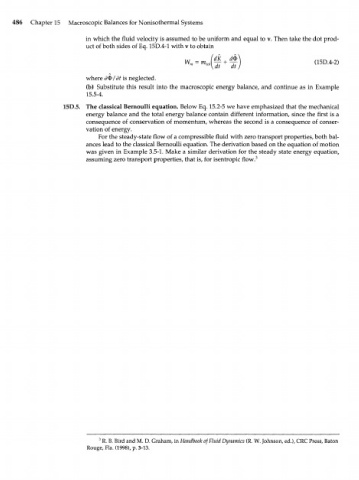Page 506 - Bird R.B. Transport phenomena
P. 506
486 Chapter 15 Macroscopic Balances for Nonisothermal Systems
in which the fluid velocity is assumed to be uniform and equal to v. Then take the dot prod-
uct of both sides of Eq. 15D.4-1 with v to obtain
j ^ + J (15D.4-2)
^
where дФ/dt is neglected.
(b) Substitute this result into the macroscopic energy balance, and continue as in Example
15.5-4.
15D.5. The classical Bernoulli equation. Below Eq. 15.2-5 we have emphasized that the mechanical
energy balance and the total energy balance contain different information, since the first is a
consequence of conservation of momentum, whereas the second is a consequence of conser-
vation of energy.
For the steady-state flow of a compressible fluid with zero transport properties, both bal-
ances lead to the classical Bernoulli equation. The derivation based on the equation of motion
was given in Example 3.5-1. Make a similar derivation for the steady state energy equation,
assuming zero transport properties, that is, for isentropic flow. 3
3 R. B. Bird and M. D. Graham, in Handbook of Fluid Dynamics (R. W. Johnson, ed.), CRC Press, Baton
Rouge, Fla. (1998), p. 3-13.

